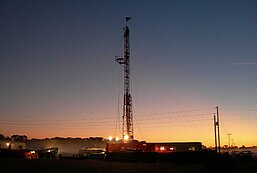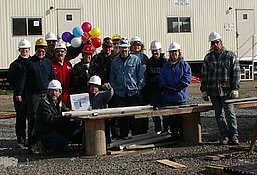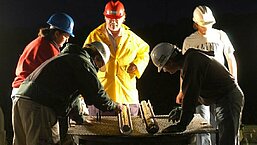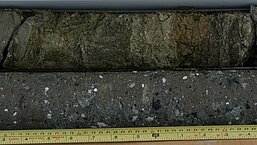Chesapeake Bay Impact Structure Deep Drilling Project
Project Acronym: CBAY | State: Completed | Expedition ID: 5001
The late Eocene Chesapeake Bay impact structure is among the largest and best preserved impact craters on Earth.
The subsurface structure of the Chesapeake Bay crater is constrained by several shallow coreholes, marine seismic-reflection surveys, and gravity analyses. Major subdivisions of the structure are a circa 38-km-diameter central crater, enclosed by a 24-km-wide annular trough.
Research topics include studies of impact processes, regional basin evolution (comparing impact effects with "normal" effects produced by tectonics, global sea-level, and sediment supply on a passive continental margin), hydrogeology, borehole and regional geophysics, and the deep biosphere.
Keywords: North America, USA, Virginia, Chesapeake Bay, Cenozoic Sequence, Climate Change, Eocene, Global Environment, Impact Crater, Paleoclimatology, Sea-level Changes

Cores are stored at U.S. Geological Survey, Core Research Center, Denver, USA.
Project Management
Project Details
Project Location
Project Timeline
Sampling Party
15 June 2006
Drilling 2
1 April - 31 May 2006
Drilling 1
15 September - 9 December 2005
Full Proposal Approved
Workshop Held
22 - 24 September 2003 in Reston, Virginia, USA




